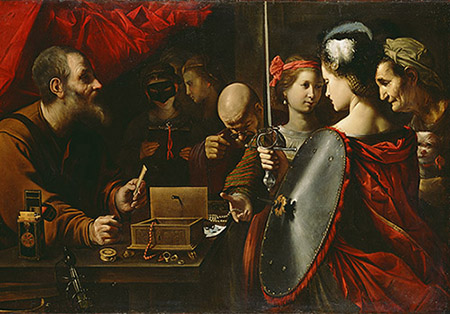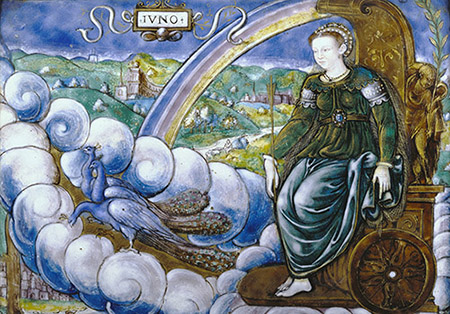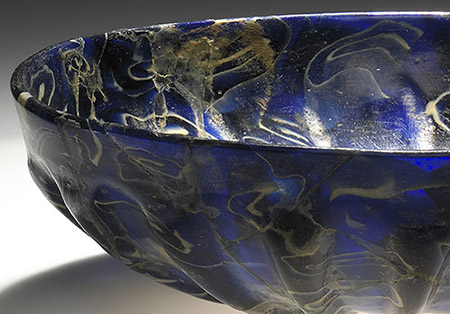Permanent Exhibits
The Italian Masters
New permanent exhibit at the Getty Center, Opening April 1

Pietro Paolini (Italian, 1603-1681)
Oil on canvas
The Renaissance courts of northern Italy, among the wealthiest and most sophisticated in Europe, attracted innovative artists who created objects of remarkable beauty.
Princes and courtiers offered artists favorable contracts and social prestige in return for fine paintings, lavishly decorated panels, and richly illuminated books. These works prominently displayed their owners’ scholarly learning, religious devotion, and elite status.
Drawn primarily from the Getty Museum’s permanent collection, this exhibition celebrates the magnificent works that emerged from this courtly context, an array of visual riches fit for the highest-ranking members of Renaissance society.
Accompanying the show is an online virtual exhibition, produced in collaboration with institutions in Ferrara, Mantua, Milan, Venice, and Verona, that allows visitors to view additional works by artists active in the northern Italian courts as well as items owned by various patrons who lived there.
According to legend, Achilles’ mother, knew her son would die if he fought in the Trojan War; she disguised him as a woman and entrusted him to King Lycomedes’ household, where he lived among the king’s daughters. Ulysses, sent to trick him into revealing himself, deposited many gifts before the women: jewelry and finery, but also a sword and shield. Achilles instinctively grasped the weapons and revealed his identity.
Pietro Paolini, artist of the work shown below, placed his figures in a dark, shallow space, dramatically lighting the figure of Achilles. Additional highlights illuminate the other faces and pick out the shiny jewelry and weapons.
Gods & Heroes: Myth in Art
New permanent exhibit at the Getty Center Los Angeles

Léonard Limosin, (French, 1505-1575/1577)
Polychrome enamel with painted gold highlights on copper and silver
The colorful myths and legends of Greco-Roman antiquity have inspired artists for centuries. Depending on when and where they worked, artists have approached these subjects very differently, sometimes tackling them as pretexts for visual experimentation.
The likes of Venus and Apollo, Hercules and Achilles, have proved to be particularly rich artistic subjects not only because they had extraordinary qualities―such as beauty, creativity, strength and courage―but also for the imperfections that made these characters even more compelling. Involved in love and lust, rivalry and treachery, crime and punishment, they possessed all the passions and flaws of mere mortals.
Featuring a selection of drawings dating from the Renaissance to the 19th century, Gods and Heroes explores the pictorial representation of myths that have been instrumental in the formation of Western culture. The exhibit also complements the collection at the Getty Villa, which is dedicated to the arts and culture of the ancient Mediterranean.
Encouraged by the Bishop of Limoges, Leonard Limosin (creator of the work shown below) produced painted enamels on copper in all forms, including plates and plaques with mythological and religious subjects. His prolific workshop produced more than a thousand pieces between 1533 and 1574.
Limosin supplied many enameled works for Francis I’s gallery at Fontainebleau, the largest collection of sixteenth-century French art. Limosin was an exponent of the Fontainebleau style, begun by Italian painters in France and characterized by elegant forms, attenuated figures, decorative strapwork, and surfaces intended to suggest jewels.
Glassmaking in Antiquity
New permanent exhibit at the Getty Villa Malibu, Opening July 15

Unknown artist, 1st century B.C.
Glass
The Erwin Oppenländer collection is remarkable for its chronological breadth. It includes works made in Mesopotamia, Egypt, the Greek world, and the Roman Empire, and spans the entire period of ancient glass production, from its origins in Mesopotamia in about 2500 B.C. to Byzantine and Islamic glass of the eleventh century A.D.
Also notable in the Oppenländer collection is the variety of ancient glassmaking techniques that are represented, including casting, core forming, mosaic, inflation, fusing, mold blowing, grinding, and cutting. All these techniques are still used by artists today.
Glass had both practical and decorative uses in antiquity, just as it does today. The ancient Greeks, Romans, and Etruscans stored ink, food, cosmetics, and perfumed oil in glass containers. They used glass tableware and played with glass game pieces. They looked into glass mirrors, lit the night with glass lamps, and gazed through glass windows. The wealthy decorated their homes with glass inlays and statuettes.
Core forming was one of the earliest glassmaking techniques. Glassmakers shaped a vessel around a ceramic-like core, wound colored trails of hot glass around it, and added handles and a rim.
Casting is a technique of pouring hot glass into a mold. After the glass cools, glassmakers use various grinding and cutting techniques to refine the form and decoration.
Mosaic glass vessels were formed by fusing ribbons of cane in molds until they melted together in a swirl of colors.
In about 50 B.C., glassmakers learned to inflate glass into a bubble at the end of a tube. The vessels were decorated using a variety of techniques.
